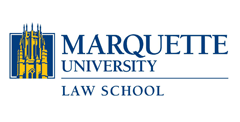Abstract
Under the fair use doctrine, use of a copyrighted work is not an infringement on a copyright if, after consideration of four factors, a court considers the use to be fair. The four factors courts are required to consider are: (1) “the purpose and character of the use;” (2) “the nature of the copyrighted work;” (3) “the amount and substantiality of the portion used in relation to the copyrighted work as a whole;” and (4) the effect the use has on “the potential market for or value of the original copyrighted work.” A circuit split exists between the Second and Seventh Circuit Courts of Appeals regarding the proper focus and application of the fair use factors in the context of copyright litigation. The purpose of this Comment is to explain why it is improper to focus solely on “transformativeness,” and why courts must also consider market effects when determining whether a secondary work is fair use of a copyrighted work. For purposes of this Comment, the reader should associate “transformativeness” with the first fair use factor, and associate market effects with the fourth fair use factor. Part II of this Comment discusses the origin of the circuit split between the Second and Seventh Circuits. Part III explains how the “transformativeness” analysis and market effect analysis are implicitly connected, which is one reason it is not appropriate to focus solely on “transformativeness.” Part IV explains how a market effects analysis helps maintain a balanced framework. Finally, Part V proposes that a market-effects analysis limits frivolous copyright infringement claims and promotes the progress of science and useful technology.
Repository Citation
Alexander Perwich,
Keinitz v. Sconnie Nation, LLC: The Seventh Circuit's Necessary Resistance to Defining the Fair Use Doctrine Solely in Terms of Transformativeness,
21 Marq. Intellectual Property L. Rev. 77
(2017).
Available at: https://scholarship.law.marquette.edu/iplr/vol21/iss1/6
Included in
Commercial Law Commons, Entertainment, Arts, and Sports Law Commons, Intellectual Property Law Commons, Litigation Commons
